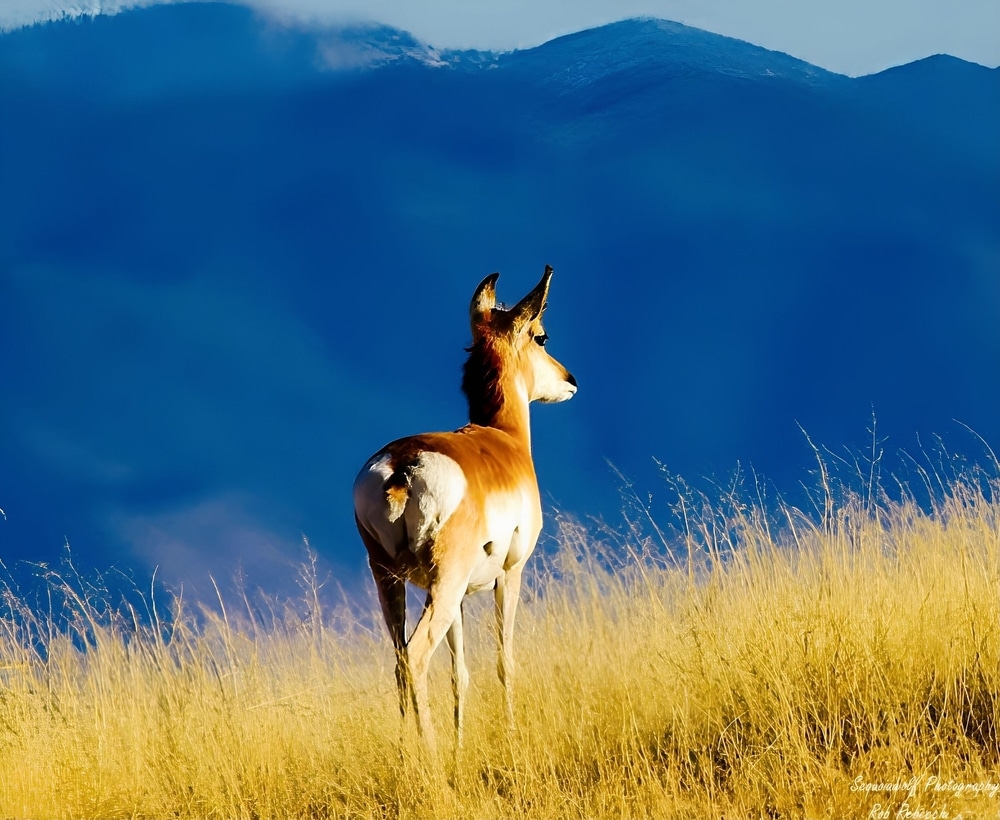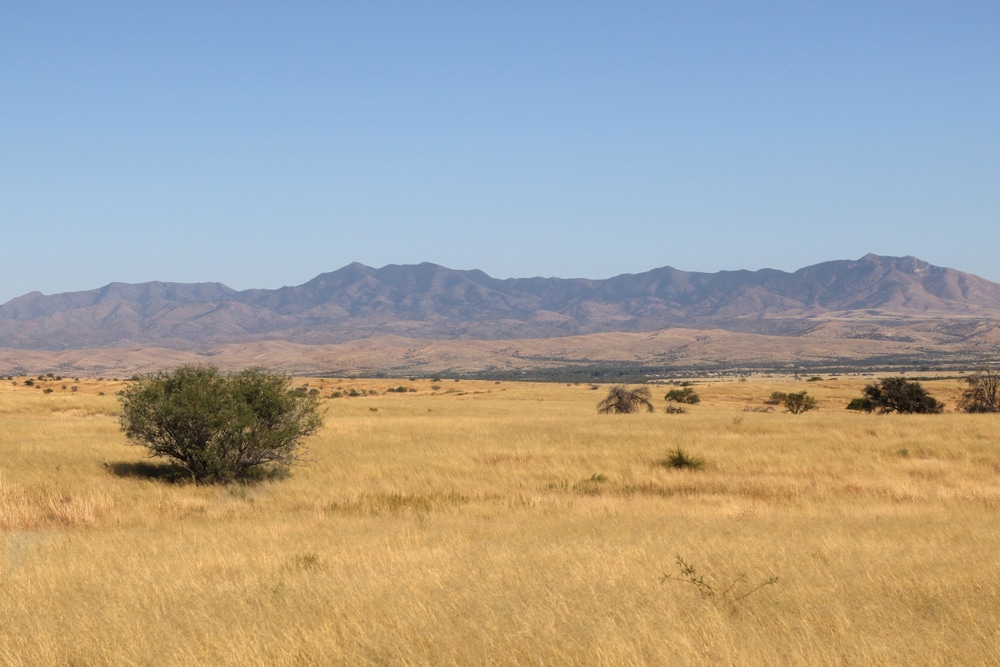Tucked away in southeastern Arizona, Las Cienegas National Conservation Area (NCA) represents one of Arizona’s most ecologically diverse yet lesser-known federal recreational lands. Spanning approximately 45,000 acres between Tucson and Sierra Vista, this expansive conservation area encompasses rare desert wetlands, rolling grasslands, oak-studded hills, and riparian corridors that provide a stark contrast to the arid landscapes typically associated with Arizona.
Las Cienegas, Spanish for “the marshes,” earned its name from the wetland cienegas that punctuate the landscape, creating unique ecological niches in the desert Southwest. Established as a National Conservation Area in 2000 through the Las Cienegas National Conservation Area Establishment Act, these lands have been protected to preserve their cultural, biological, and historical significance while allowing for sustainable recreational use and traditional ranching activities.
The area’s diverse ecosystems support over 500 plant species, 230 bird species, and numerous mammals, reptiles, and amphibians, making it a biodiversity hotspot. Historically, the landscape has witnessed the passage of Native Americans, Spanish explorers, Mexican settlers, and American pioneers, each leaving their mark on the cultural tapestry of the region. Today, Las Cienegas serves as both a working landscape and a recreational haven, offering visitors a glimpse into Arizona’s ranching heritage while providing ample opportunities for outdoor recreation and wildlife viewing.

The Empire Ranch Headquarters is a beautifully preserved historic site that offers a glimpse into the region’s ranching history. Established in the 1870s, the ranch was once one of the largest in Arizona. Today, you can:
Las Cienegas is crisscrossed by dirt roads that allow for scenic drives through the rolling grasslands and riparian areas. These routes are ideal for exploring the landscape and spotting wildlife. Popular drives include:
While most roads are accessible for standard vehicles, some may require high clearance or four-wheel drive after heavy rain.

The conservation area has a variety of scenic trails that allow you to explore the region’s grasslands, wetlands, and wildlife habitats. While most trails are unmarked, common hiking areas include:
Hiking here is more about exploring the wide-open spaces and appreciating the natural beauty, so be prepared with a map or GPS.

With its vast grasslands, riparian areas, and historic ranch buildings, Las Cienegas is a photographer’s paradise. Capture:
The area is especially beautiful at sunrise and sunset, when the golden light enhances the landscape’s natural beauty.

Las Cienegas offers wide-open spaces and dirt roads that are perfect for horseback riding. The area’s grasslands and gently rolling hills make for an enjoyable ride, and riders can explore the same trails and roads used by hikers and drivers. Bring your own horse, as there are no rental facilities on-site.

Camping in Las Cienegas NCA is a fantastic way to enjoy the area’s peace and natural beauty. Dispersed camping is allowed throughout the conservation area, with no designated campgrounds. Be sure to:
The open skies and remote location also make this a great spot for stargazing.

Las Cienegas is home to an incredible variety of wildlife due to its unique mix of grasslands and wetlands. Bring binoculars to spot:
Las Cienegas NCA is far from city lights, making it an excellent spot for stargazing. On clear nights, you can see the Milky Way, constellations, and planets. Bring a telescope or simply enjoy the night sky with the naked eye. The wide-open grasslands provide unobstructed views of the stars.

| Category | Details |
|---|---|
| Location | Southeastern Arizona, near Sonoita and Elgin |
| Established | December 6, 2000 |
| Managed By | U.S. Bureau of Land Management (BLM) |
| Size | Approximately 45,000 acres (18,211 hectares) |
| Main Attractions | Vast grasslands, rolling hills, riparian areas, and historic ranch sites |
| Ecosystem | High desert grasslands and riparian corridors, including perennial streams |
| Wildlife | Supports species like pronghorn antelope, black-tailed prairie dogs, coatimundis, and over 230 bird species |
| Cultural Significance | Contains historic ranches, such as the Empire Ranch, and ancient archaeological sites |
| Recreation Activities | Hiking, birdwatching, horseback riding, mountain biking, camping, and photography |
| Popular Areas | – Empire Ranch Headquarters: Historic ranch with interpretive exhibits- Cienega Creek: A perennial stream with lush riparian habitat |
| Nearby Landmarks | Patagonia Lake State Park, Coronado National Forest, and Sonoita Wine Country |
| Climate | Mild winters, warm summers, with monsoon rains in late summer |
| Camping | Dispersed camping is allowed; no developed campgrounds |
| Accessibility | Some areas accessible by car; trails vary in accessibility |
| Entrance Fee | No entrance fee |
| Fun Fact | Las Cienegas is one of the few remaining American Southwestern grasslands, providing critical habitat for endangered species like the Chiricahua leopard frog. |
Las Cienegas NCA is situated in Pima and Santa Cruz counties, approximately 45 miles southeast of Tucson. The conservation area is nestled between the Santa Rita Mountains to the west and the Whetstone Mountains to the east, creating a scenic valley that captures the essence of southeastern Arizona’s sky island region.
The main access points to Las Cienegas NCA include:
North Entrance: From Tucson, take Interstate 10 east to Highway 83 south. Follow Highway 83 for approximately 25 miles until you reach the Empire Ranch Headquarters, the historical and administrative center of the NCA.
South Entrance: From Sierra Vista, take Highway 90 north to Highway 82, then west to Highway 83, and north to the conservation area.
East Entrance: From Sonoita, take Highway 82 west for a short distance, then turn north onto Highway 83.
Most roads within the conservation area are unpaved but generally well-maintained and accessible to passenger vehicles during dry conditions. However, four-wheel drive or high-clearance vehicles are recommended during the monsoon season (July-September) when roads may become muddy and washed out.
Las Cienegas NCA encompasses five major ecosystem types, creating a mosaic of habitats that support remarkable biodiversity:
The defining feature of Las Cienegas is its rare desert wetlands or cienegas. These marshlands occur where groundwater reaches the surface, creating perennial water sources that support lush vegetation and provide critical habitat for numerous species. Cienega Creek, which runs through the conservation area, sustains one of the few remaining perennial streams in southeastern Arizona.
The wetlands serve as crucial stopover points for migratory birds and provide habitat for endangered species like the Chiricahua leopard frog and the Gila topminnow. Visitors can observe these unique ecosystems from designated viewing areas, though direct access to some sensitive wetland areas may be restricted to protect these fragile environments.
The vast majority of Las Cienegas consists of rolling grasslands that represent some of the best remaining examples of semi-desert grassland habitat in the Southwest. These golden prairies, dominated by native grasses such as blue grama, sideoats grama, and Arizona cottontop, create a landscape reminiscent of the Great Plains rather than typical desert scenery.
The grasslands are particularly spectacular in late summer after monsoon rains, when they transform into a sea of golden grasses waving in the wind against the backdrop of distant mountains. These grasslands provide habitat for pronghorn antelope, which were reintroduced to the area in the 1980s after being absent for nearly a century.
Scattered throughout the conservation area are mesquite bosques (Spanish for “forests”), dense stands of velvet mesquite trees that create shaded woodland areas amid the open grasslands. These bosques provide important habitat for numerous birds and small mammals and offer pleasant shaded areas for hikers and wildlife watchers.
Along Cienega Creek and its tributaries, cottonwood-willow riparian forests create green ribbons through the landscape. These lush corridors support the highest diversity of wildlife in the conservation area, including numerous bird species, coatimundi, javelina, white-tailed deer, and the occasional mountain lion or black bear passing through from nearby mountain ranges.
In the higher elevations and along the foothills of the Santa Rita Mountains, oak woodlands featuring Emory oak and Mexican blue oak create a transition zone between the grasslands and the higher mountain forests beyond the conservation area’s boundaries.
Las Cienegas NCA boasts a rich cultural history spanning thousands of years, from prehistoric Native American settlements to historic ranching operations:
Archaeological evidence suggests human presence in the Las Cienegas area dating back at least 8,000 years. The perennial water sources attracted various indigenous groups, including the Hohokam, Sobaipuri, and Apache peoples, who utilized the area’s abundant resources for hunting, gathering, and agriculture. While most archaeological sites are not marked for public visitation to protect their integrity, interpretive displays at the Empire Ranch Headquarters provide information about the area’s indigenous history.
The crown jewel of Las Cienegas’ historical resources is the Empire Ranch, established in 1876 by Walter Vail and Herbert Hislop. This historic ranch complex grew from a small adobe building into a 22-room ranch house that stands today as a testament to Arizona’s ranching heritage. The Empire Ranch Foundation, in partnership with the Bureau of Land Management (BLM), has meticulously preserved the ranch headquarters, which is listed on the National Register of Historic Places.
Visitors can explore the ranch buildings, which contain exhibits on ranching history, and walk the Empire Ranch Heritage Discovery Trail, a self-guided interpretive trail that showcases the ranch operations and daily life during its heyday. The ranch headquarters also serves as an information center for the entire conservation area.
The picturesque landscapes of Las Cienegas attracted Hollywood filmmakers as early as the 1950s. The area served as a backdrop for numerous Western films, including “Oklahoma!” (1955), “Red River” (1948), and “Monte Walsh” (1970), among many others. The Empire Ranch Foundation hosts occasional events celebrating this cinematic heritage, and visitors can recognize filming locations from interpretive materials available at the ranch headquarters.
Las Cienegas NCA offers a wide array of recreational activities for outdoor enthusiasts of all types, providing opportunities to experience the natural beauty and cultural history of southeastern Arizona:
While Las Cienegas lacks a formal trail system comparable to national parks, it offers numerous informal paths and old ranch roads ideal for hiking and exploring. Popular walking routes include:
Empire Ranch Heritage Discovery Trail: A 1-mile interpretive loop around the Empire Ranch Headquarters, showcasing the historic buildings and ranching operations.
Cienega Creek Trail: An unmaintained path following portions of Cienega Creek, offering opportunities to observe riparian habitats and wildlife.
Oak Tree Canyon: A moderate hike through oak woodlands in the western portion of the conservation area.
Visitors should note that most hiking routes are unmarked, and carrying a map, compass, or GPS device is recommended. Cross-country hiking is permitted throughout most of the conservation area, allowing for exploration and solitude.
Las Cienegas is renowned among wildlife enthusiasts for its exceptional biodiversity. The area’s diverse habitats support:
Birds: Over 230 species, including vermilion flycatchers, zone-tailed hawks, gray hawks, Botteri’s sparrows, and numerous migratory species. The riparian areas are particularly productive for birdwatching.
Mammals: Pronghorn antelope, white-tailed deer, javelina, coyotes, bobcats, and occasionally mountain lions.
Reptiles and Amphibians: Various lizards, snakes, and the endangered Chiricahua leopard frog.
The best wildlife viewing opportunities occur during early morning or late afternoon hours. The Empire Ranch Headquarters provides information on recent wildlife sightings and recommended viewing areas.
The diverse landscapes of Las Cienegas offer endless opportunities for photography. Particularly photogenic features include:
Given the area’s ranching heritage, horseback riding is a fitting way to experience Las Cienegas. Riders must bring their own horses, as there are no rental facilities within the conservation area. The open terrain and old ranch roads provide excellent riding opportunities with few restrictions, though riders should avoid sensitive wetland areas and stay on established routes when possible.
Mountain biking is permitted on existing roads and routes throughout most of the conservation area. The rolling terrain offers rides suitable for various skill levels, from easy rides along main dirt roads to more challenging routes in the foothills. Bikers should yield to horses and be mindful of cattle that may be encountered along routes.
Las Cienegas offers dispersed camping opportunities with few amenities but abundant solitude:
Dispersed Camping: Allowed throughout most of the conservation area except within a half-mile of the Empire Ranch Headquarters and in sensitive wetland areas. No designated sites or facilities are provided.
Empire Gulch Camping Area: This informal camping area offers a flat space suitable for tents or small RVs but has no water or toilet facilities.
Campers should practice Leave No Trace principles, pack out all waste, and be prepared for primitive conditions with no potable water available. Campfires may be restricted during dry periods and fire danger.
Seasonal hunting is permitted in accordance with Arizona Game and Fish Department regulations. Las Cienegas offers opportunities to hunt mule deer, white-tailed deer, javelina, dove, quail, and rabbit. Hunters must obtain appropriate licenses and follow all state regulations and seasonal restrictions.
The remote location and minimal light pollution make Las Cienegas an excellent destination for stargazing. The high elevation (approximately 4,500 feet) provides clear viewing conditions on cloud-free nights. The Empire Ranch Foundation occasionally hosts stargazing events with local astronomy groups.
The experience at Las Cienegas varies dramatically with the seasons, each offering distinct attractions and considerations:
Spring brings mild temperatures and wildflower displays, particularly in April and May when Mexican poppies, lupines, and globe mallows may carpet portions of the grasslands. This is an excellent time for hiking and wildlife viewing before summer heat arrives. Bird diversity peaks in late spring as migratory species pass through or arrive to nest.
Summer brings monsoon rains, typically beginning in early July. Though daytime temperatures can exceed 90°F, afternoon thunderstorms provide dramatic skies and cooling relief. The monsoon transforms the landscape, turning brown grasslands to vibrant green within days of the first substantial rains. This is the most visually spectacular season at Las Cienegas but requires preparation for sudden storms, possible flash flooding, and muddy road conditions.
Fall offers pleasant temperatures and golden grasslands. This is an ideal time for extended hikes and camping as temperatures moderate and insect activity diminishes. Wildlife becomes more active during daylight hours as temperatures cool.
Winter brings cool, crisp days with temperatures typically ranging from 30-60°F. Occasional light snow may dust the grasslands, creating unusual photo opportunities. Winter offers the clearest air quality and long-distance views of surrounding mountains. Visitors should be prepared for cold overnight temperatures if camping.
Operating Hours: Las Cienegas NCA is open 24 hours a day, year-round.
Entrance Fees: None. The conservation area is free to enter and explore.
Empire Ranch Headquarters: Open to the public daily from sunrise to sunset, with buildings open on a more limited schedule. Check the Empire Ranch Foundation website for current information.
Las Cienegas is managed as a relatively undeveloped natural area with minimal facilities:
Restrooms: Vault toilets are available at the Empire Ranch Headquarters. No restroom facilities exist elsewhere in the conservation area.
Water: No potable water is available. Visitors must bring all needed water.
Information: The Empire Ranch Headquarters serves as an informal visitor center with interpretive displays and occasionally staffed by volunteers, particularly on weekends.
Picnic Areas: A few picnic tables are available near the Empire Ranch Headquarters.
Cell Service: Cell phone coverage is spotty throughout the conservation area. Do not rely on cell phones for emergency communication.
Motorized Vehicles: Restricted to designated roads only. No off-road travel is permitted.
Collection: Collection of plants, animals, artifacts, or other natural or cultural resources is prohibited.
Pets: Allowed but must be kept under control at all times. Leashes are recommended to protect wildlife and cattle.
Waste Disposal: Pack out all trash. No garbage facilities are provided in the backcountry.
Firearms: Discharge of firearms is permitted only during legal hunting seasons or at the Airstrip public shooting area.
Water: Bring ample water for your activities. The arid environment can cause rapid dehydration, even in cooler months.
Weather: Be prepared for rapid weather changes, particularly during monsoon season when thunderstorms can develop quickly.
Wildlife: Respect wildlife by maintaining distance. Be aware of rattlesnakes during warm months.
Navigation: Many areas lack cell service and have unmarked routes. Carry maps and navigation tools.
Isolation: Parts of the conservation area are remote. Inform someone of your plans and expected return time.
Cattle: The area remains a working landscape with active grazing. Give cattle plenty of space and close all gates you pass through.
Las Cienegas NCA is managed by the Bureau of Land Management (BLM) with a focus on multiple-use that balances conservation with recreation and traditional uses:
The BLM, in partnership with various organizations, conducts ongoing restoration projects throughout Las Cienegas, including:
Unlike many conservation areas, Las Cienegas continues to support active cattle ranching through a carefully managed grazing program. This sustainable approach preserves the area’s ranching heritage while using livestock as a tool for grassland management. The grazing program incorporates rest-rotation methods to ensure rangeland health and provide diverse habitat structures for wildlife.
Visitors interested in contributing to the conservation of Las Cienegas can participate in volunteer programs through:
Empire Ranch Foundation: Offers volunteer opportunities related to the preservation and interpretation of the historic ranch buildings and cultural history.
BLM Volunteer Program: Coordinates habitat restoration projects, wildlife monitoring, and other conservation activities throughout the conservation area.
Las Cienegas faces numerous challenges related to climate change, including:
The BLM is implementing adaptive management strategies to increase ecosystem resilience, including expanding riparian buffer zones, monitoring groundwater impacts, and adjusting grazing management to respond to changing conditions.
Visitors to Las Cienegas can enhance their experience by exploring nearby attractions:
Sonoita-Elgin Wine Country: Arizona’s premier wine region lies just minutes from Las Cienegas, offering tastings at numerous vineyards.
Kartchner Caverns State Park: Located approximately 30 miles east, features spectacular living limestone caverns with guided tours.
Patagonia Lake State Park: About 25 miles south, offers swimming, fishing, and boating opportunities.
Coronado National Forest: Surrounds Las Cienegas on multiple sides, providing access to the Santa Rita and Whetstone Mountains for additional hiking and recreation.
Historic Town of Tombstone: The famous “Town Too Tough to Die” is located approximately 30 miles east, offering Wild West history and attractions.
Las Cienegas National Conservation Area represents one of Arizona’s hidden treasures—a place where natural beauty, biodiversity, and cultural heritage coexist in a landscape that has supported human activities for thousands of years while maintaining its ecological integrity. As one of the last extensive grassland ecosystems in the Southwest, Las Cienegas provides not only recreational opportunities but also critical habitat for rare species and a living laboratory for sustainable land management practices.
Unlike more developed and heavily visited public lands, Las Cienegas offers an experience characterized by solitude, open spaces, and self-directed exploration. Visitors willing to venture beyond the traditional tourist destinations will find in Las Cienegas a place where Arizona’s natural and cultural heritage remains intact and accessible.
As climate change and development pressures continue to transform the American Southwest, conservation areas like Las Cienegas become increasingly important as refuges for biodiversity and windows into the region’s ecological and cultural history. By visiting respectfully and supporting conservation efforts, today’s visitors help ensure that this remarkable landscape remains protected for future generations to discover and enjoy.
For additional information about Las Cienegas National Conservation Area:
Bureau of Land Management – Tucson Field Office
3201 East Universal Way
Tucson, AZ 85756
Phone: (520) 258-7200
Website: www.blm.gov/visit/las-cienegas
Empire Ranch Foundation
Website: www.empireranchfoundation.org
Friends of Las Cienegas
A volunteer organization supporting conservation and education in the NCA
Arizona Game and Fish Department
For hunting regulations and wildlife information
Website: www.azgfd.com

We use cookies to improve your experience on our site. By using our site, you consent to cookies.
Manage your cookie preferences below:
Essential cookies enable basic functions and are necessary for the proper function of the website.
Statistics cookies collect information anonymously. This information helps us understand how visitors use our website.
Marketing cookies are used to follow visitors to websites. The intention is to show ads that are relevant and engaging to the individual user.